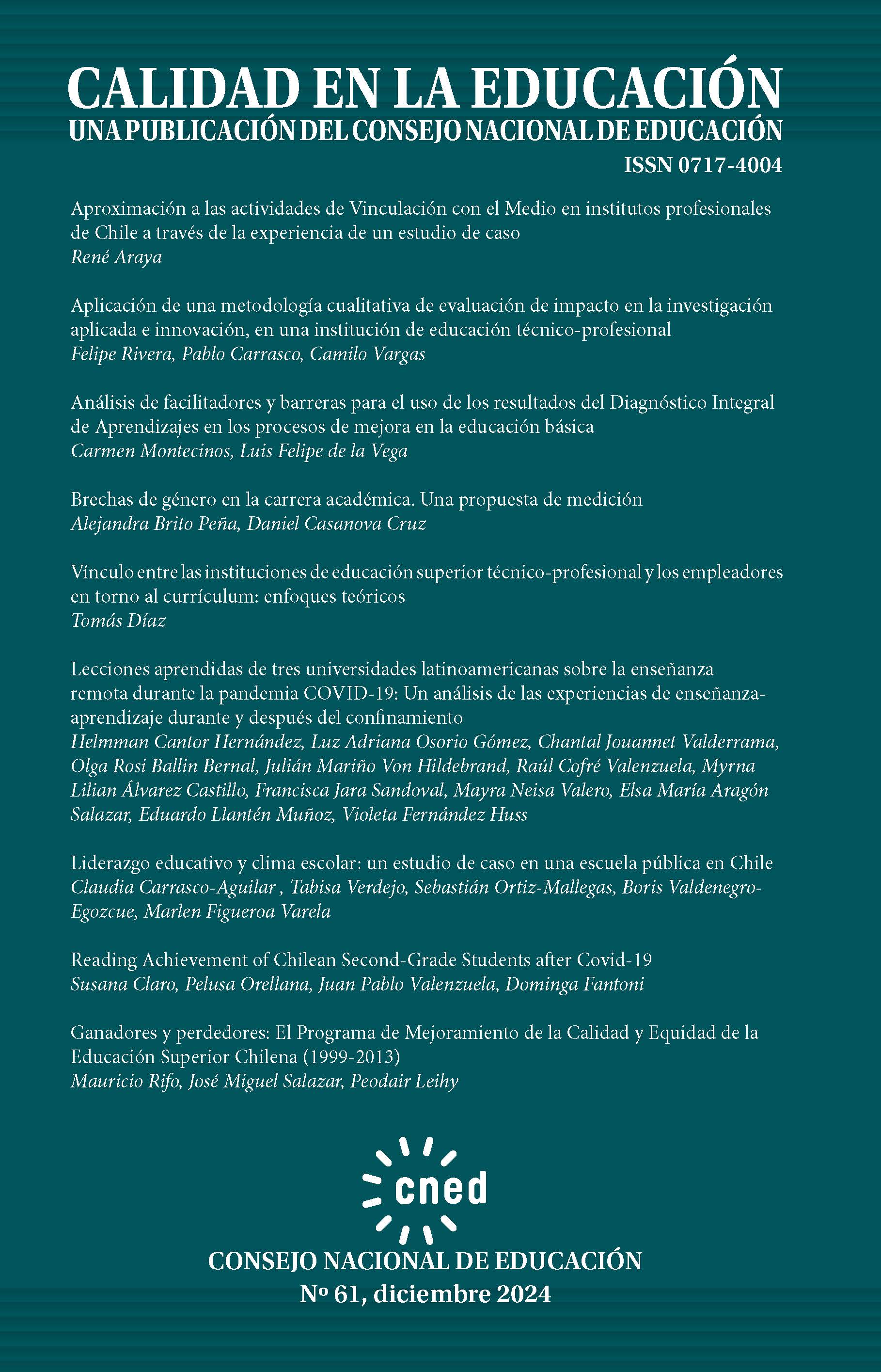Applying a Qualitative Methodology of Impact Assessment to an Innovative Applying Research within a Technical-Professional Institution
DOI:
https://doi.org/10.31619/caledu.n61.1480Keywords:
quality assurance, evaluation methodology, impact and contributions, applied research and innovationAbstract
Since 2007, Duoc UC, a technical-professional institution, has fostered research, development, innovation, and knowledge transfer, through programs designed to train students in innovation and entrepreneurship. Since 2016 it further solidified its commitment by introducing an institutional strategy for innovation and applied research. However, recent regulatory changes in Chile’s higher education landscape have raised critical questions about how to effectively assess the impact and outcomes in areas like societal engagement, research, and innovation. This shift challenges higher education institutions to rethink their quality assurance mechanisms and innovate in their assessment processes. This study analyzes the implementation of an impact and contributions evaluation methodology at a vocational institution within Chile’s technic-professional education sector By adopting a qualitative methodological protocol the institution sought to assess its impact and contributions comprehensively. The analysis highlights key considerations for innovating in evaluation practices, the relevance of feedback in educational processes, and the benefits of embracing new methodologies for impact assessment.
Downloads
Published
Issue
Section
License

This work is licensed under a Creative Commons Attribution 4.0 International License.
Authors retain their Copyright and only transfer a part of these to the journal, accepting the following conditions:
Authors keep their rights as authors and guarantee the right to the journal for the first publication of their work, which is simultaneously subject to the Creative Commons Attribution license allowing third parties to share the study accrediting the author and first publication in this journal.
Authors may adopt other non-exclusive license agreements for distribution of the version of the published work (e.g. inclusion in an institutional thematic file or publication in a monographic volume) accrediting initial publication in this journal.
Authors are allowed and recommended to share their work over the Internet (e.g. in institutional telematic files or their website) before and during the submission process, which may lead to interesting exchanges and increased citation of the published work. (See The effect of open access).

